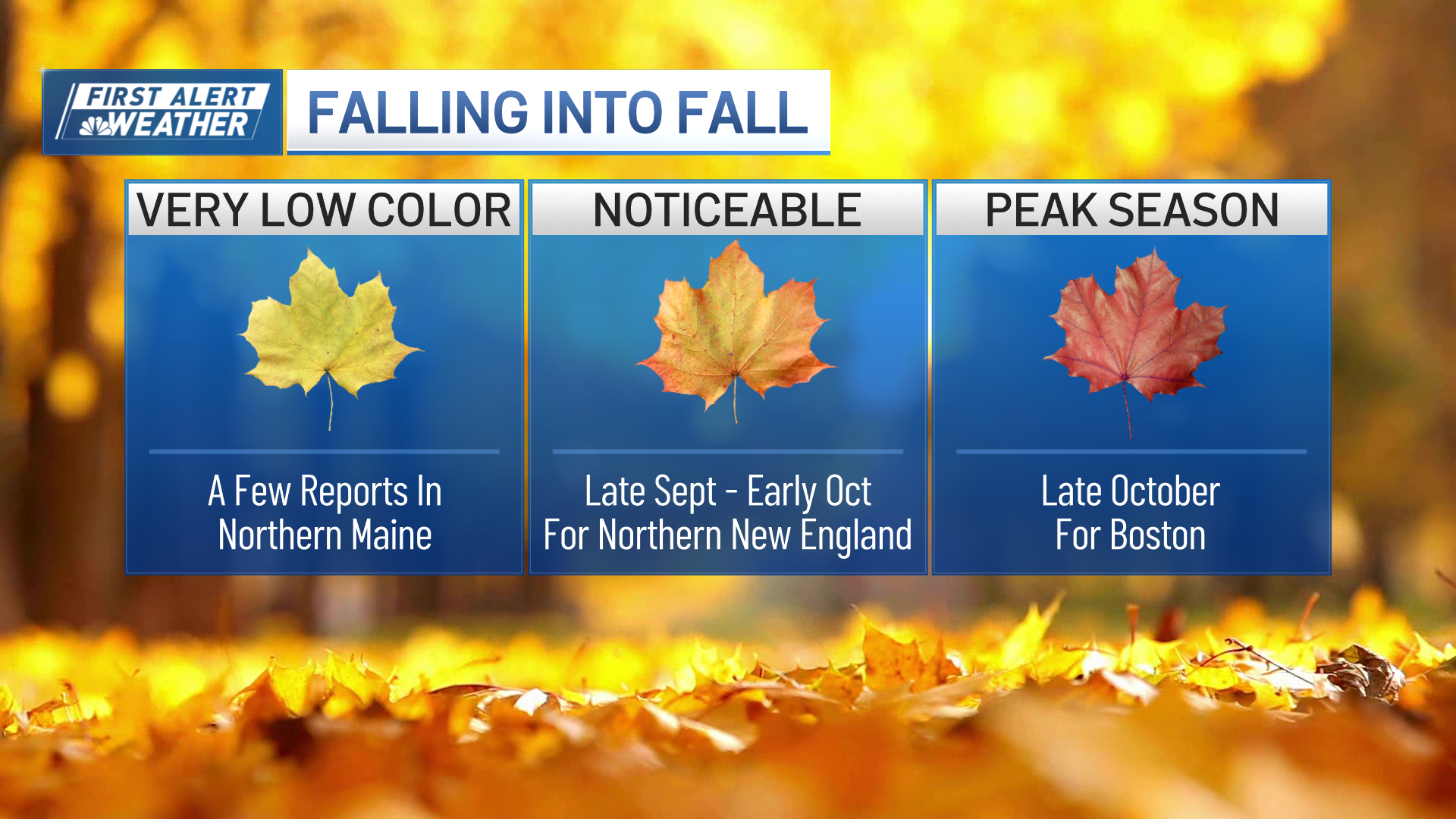Fall foliage is a New England staple. NBC10 Boston meteorologist Tevin Wooten tells us what to expect this year based on the summer’s hot and dry weather.
Follow NBC10 Boston:
https://instagram.com/nbc10boston
https://tiktok.com/@nbc10boston
https://facebook.com/NBC10Boston
https://twitter.com/NBC10Boston
Fall foliage is a New England staple. It’s estimated that 3.6 million tourists from across the globe visit Vermont alone for a front row seat to the beautiful colors!
But with this year’s hot and dry weather, leaf peepers may need to get a head start if they hope to see any color at all.
WATCH ANYTIME FOR FREE
>Stream NBC10 Boston news for free, 24/7, wherever you are. |
Andy Finton, an ecologist with The Nature Conservancy in Massachusetts, said the season is starting to do some crazy things.
"A lot of these trees are early. They're turning colors early, sometimes not as brilliant as they normally would. The red maples are not turning red right now, they’re turning brown. They’re done," said Finton. "The leaves are saying hey we can’t hang on any longer. The trees are saying let’s call it quits for the year."
Get updates on what's happening in Boston to your inbox. Sign up for our >News Headlines newsletter.
He knows that forests are New England’s “character.” With little rain and heat stressed trees, he said the 30 million acres of forest in New England won’t be as fresh with foliage this season.
The trees that are holding leaves, are changing color weeks early. “In terms of everything happening all at once in late September, mid-October…it’s not going to happen that way,” he said. “It’s going to be a little chaotic. You’re going to get some uncertainty and some mismatches.”
Those abnormalities will continue with our climate changing too. According to Climate Central, fall is Boston’s second fastest warming season. Meaning the cool and crisp nights are moving out, as warmer air from the south, moves in. This causes trees to move where they’re better suited too.
“Trees are literally moving northward at a rate of about a mile a year,” said Finton. “Basically climate change is going to create increased variability and uncertainty. But they’re still going to be stellar years,” when conditions are right.
He admits that there will likely be a “second season” in eastern Massachusetts that’s oak tree dominant. He said oaks should be promising and reds, oranges, rusts, browns and purples may be seen in late October and mid-November, depending on the amount of rain.
While it may not be traditional, Finton said that a redefined season is better than nothing at all.
“My bottom line is it’s a perfect time to get into nature and experience it and notice it in a way that you might not the rest of the year,” he said.



